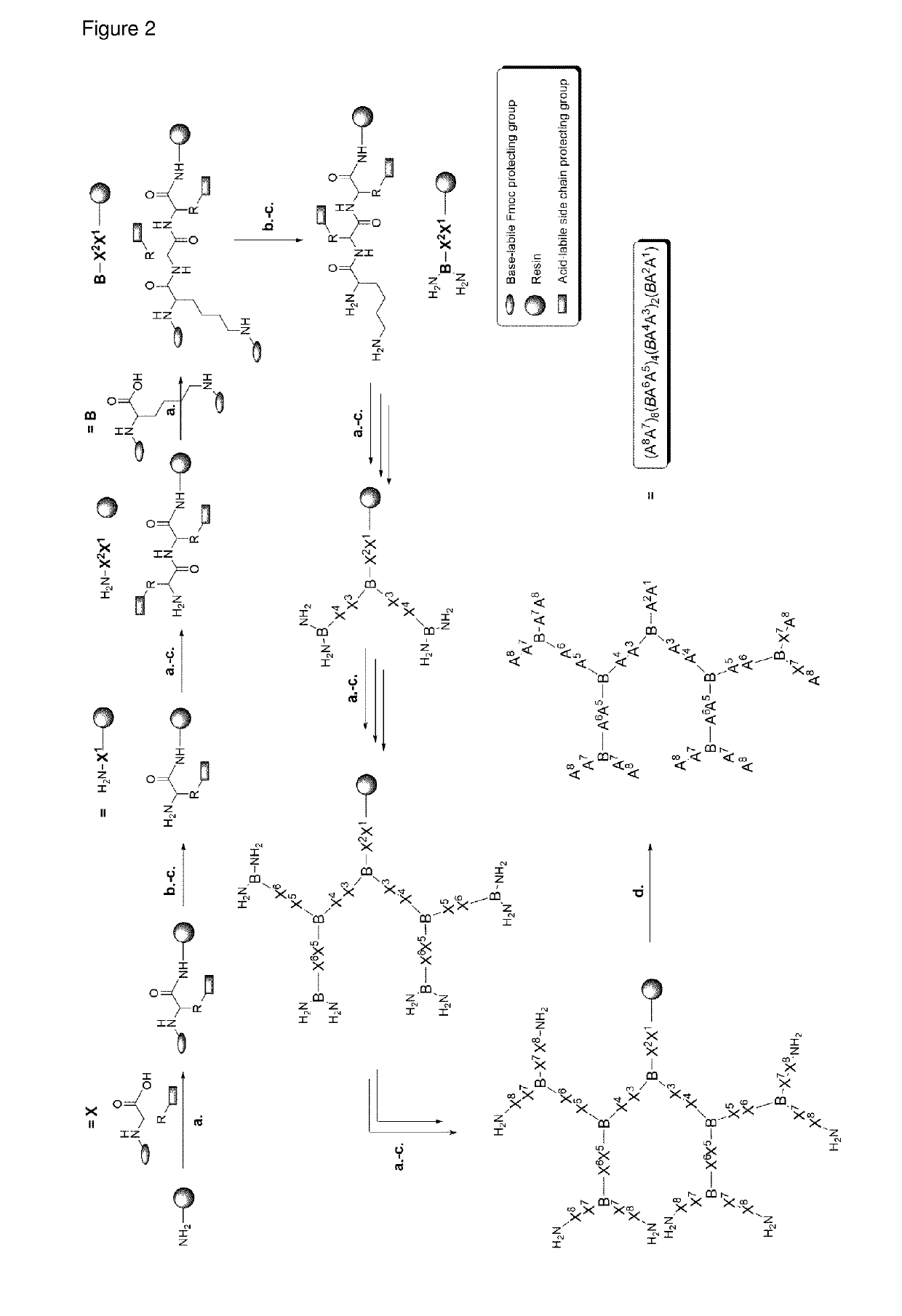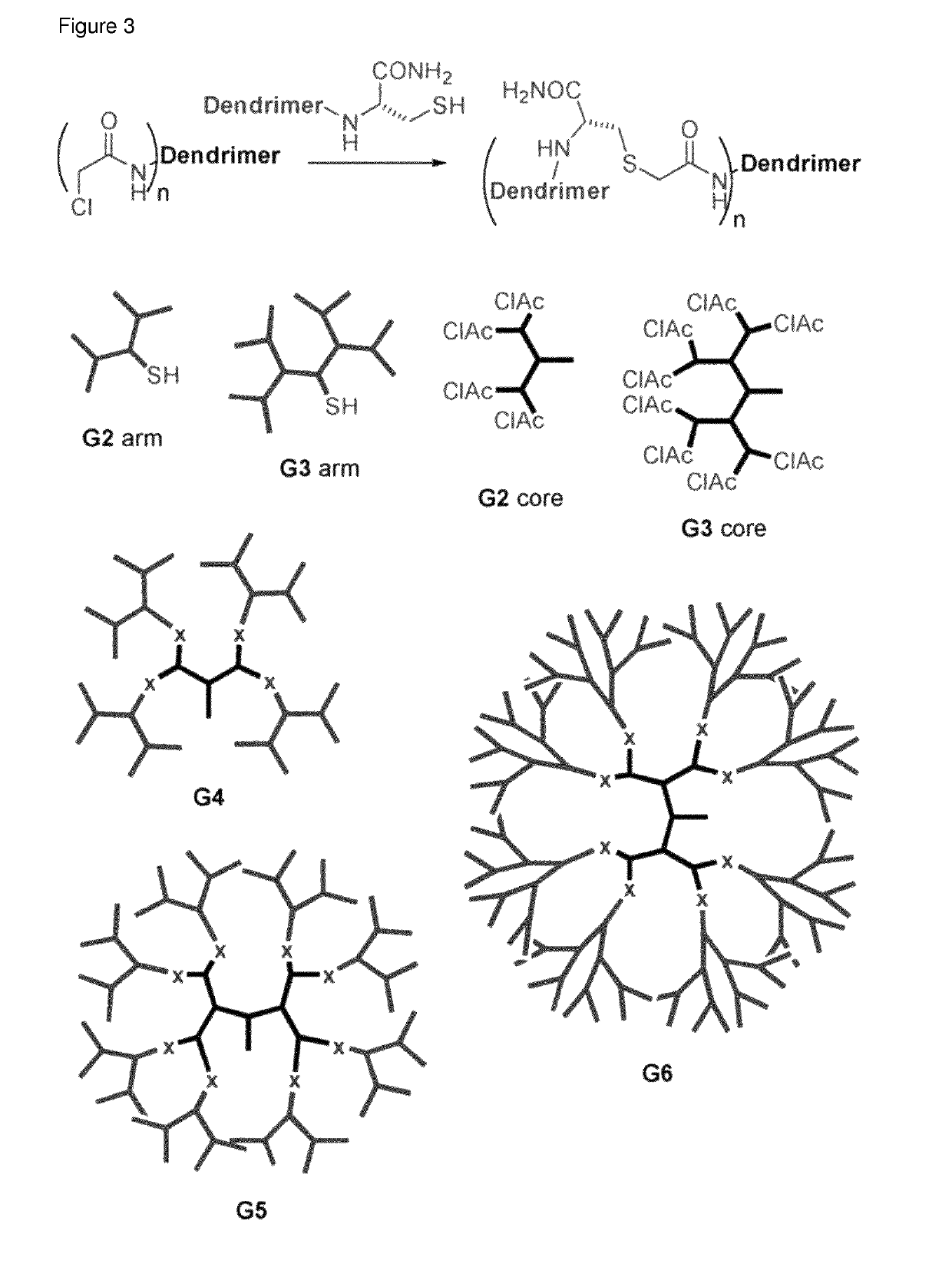Antimicrobial peptide dendrimers
a technology of antimicrobial peptides and dendrimers, which is applied in the direction of peptide/protein ingredients, human health protection, peptide sources, etc., can solve the problems of rapid degradation by proteases, systemic infections, and decrease the susceptibility to antibiotics, and achieves the effect of facilitating regulatory approval and easy metabolization
- Summary
- Abstract
- Description
- Claims
- Application Information
AI Technical Summary
Benefits of technology
Problems solved by technology
Method used
Image
Examples
Embodiment Construction
[0249]First a library of various compounds with different generations, branching units and charge to hydrophobic ratio was synthesized to get an insight into structure activity relationship (SAR). It was found that for high activity it is beneficial to have a charged and a hydrophobic amino acid in each generation with a charged amino acid in the second position from the C-terminus of the peptide.
[0250]A library of AMPDs with hydrophobic chains was synthesized and tested. Carboxylic acids with a chain length of C6 to C24 were attached to an additional Lys introduced in the core of 2nd and 3rd generation AMPDs with KL motive between the branching unit (FIG. 4). The 2nd and 3rd generation AMPDs with hydrophobic side chains (MSt-260-MSt-267) appeared to be the most potent structures tested against P. aeruginosa, including clinical isolates with resistance against common antibiotics. Although addition of hydrophobic side chains to 3rd generation AMPDs results in increased haemolytic act...
PUM
| Property | Measurement | Unit |
|---|---|---|
| minimal inhibitory concentration | aaaaa | aaaaa |
| concentration | aaaaa | aaaaa |
| pH | aaaaa | aaaaa |
Abstract
Description
Claims
Application Information
 Login to View More
Login to View More - R&D
- Intellectual Property
- Life Sciences
- Materials
- Tech Scout
- Unparalleled Data Quality
- Higher Quality Content
- 60% Fewer Hallucinations
Browse by: Latest US Patents, China's latest patents, Technical Efficacy Thesaurus, Application Domain, Technology Topic, Popular Technical Reports.
© 2025 PatSnap. All rights reserved.Legal|Privacy policy|Modern Slavery Act Transparency Statement|Sitemap|About US| Contact US: help@patsnap.com



